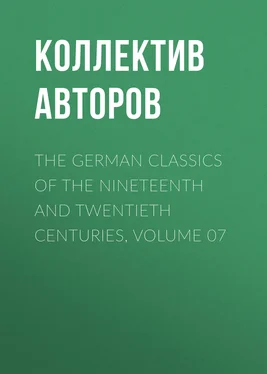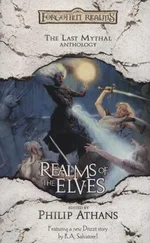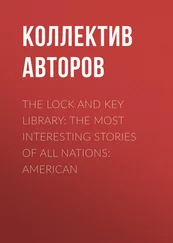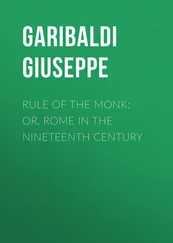Коллектив авторов - The German Classics of the Nineteenth and Twentieth Centuries, Volume 07
Здесь есть возможность читать онлайн «Коллектив авторов - The German Classics of the Nineteenth and Twentieth Centuries, Volume 07» — ознакомительный отрывок электронной книги совершенно бесплатно, а после прочтения отрывка купить полную версию. В некоторых случаях можно слушать аудио, скачать через торрент в формате fb2 и присутствует краткое содержание. Жанр: foreign_prose, foreign_antique, на английском языке. Описание произведения, (предисловие) а так же отзывы посетителей доступны на портале библиотеки ЛибКат.
- Название:The German Classics of the Nineteenth and Twentieth Centuries, Volume 07
- Автор:
- Жанр:
- Год:неизвестен
- ISBN:нет данных
- Рейтинг книги:3 / 5. Голосов: 1
-
Избранное:Добавить в избранное
- Отзывы:
-
Ваша оценка:
- 60
- 1
- 2
- 3
- 4
- 5
The German Classics of the Nineteenth and Twentieth Centuries, Volume 07: краткое содержание, описание и аннотация
Предлагаем к чтению аннотацию, описание, краткое содержание или предисловие (зависит от того, что написал сам автор книги «The German Classics of the Nineteenth and Twentieth Centuries, Volume 07»). Если вы не нашли необходимую информацию о книге — напишите в комментариях, мы постараемся отыскать её.
The German Classics of the Nineteenth and Twentieth Centuries, Volume 07 — читать онлайн ознакомительный отрывок
Ниже представлен текст книги, разбитый по страницам. Система сохранения места последней прочитанной страницы, позволяет с удобством читать онлайн бесплатно книгу «The German Classics of the Nineteenth and Twentieth Centuries, Volume 07», без необходимости каждый раз заново искать на чём Вы остановились. Поставьте закладку, и сможете в любой момент перейти на страницу, на которой закончили чтение.
Интервал:
Закладка:
If in the manner just described the unity of the human and divine nature is raised from an immediate to a conscious, unity, the true mold for the reality of this content is no longer the sensuous, immediate existence of the spiritual, the bodily frame of man, but self-consciousness and internal contemplation. For this reason Christianity, in depicting God as Spirit—not as particularized individual mind, but as absolute and universal Spirit—retires from the sensuousness of imagination into the sphere of inner being, and makes this, and not the bodily form, the material and mold of its content; and thus the unity of the human and divine nature is a conscious unity, capable of realization only by spiritual knowledge. The new content, won by this unity, is not dependent upon sensuous representation; it is now exempt from such immediate existence. In this way, however, romantic art becomes art which transcends itself, carrying on this process of self-transcendence within its own artistic sphere and artistic form.
Briefly stated, the essence of romantic art consists in the artistic object being the free, concrete, spiritual idea itself, which is revealed in its spirituality to the inner, and not the outer, eye. In conformity with such a content, art can, in a sense, not work for sensuous perception, but must aim at the inner mood, which completely fuses with its object, at the most subjective inner shrine, at the heart, the feeling, which, as spiritual feeling, longs for freedom within itself and seeks and finds reconciliation only within the inner recesses of the spirit. This inner world is the content of romantic art, and as such an inner life, or as its reflection, it must seek embodiment. The inner life thus triumphs over the outer world—indeed, so triumphs over it that the outer world itself is made to proclaim its victory, through which the sensuous appearance sinks into worthlessness.
On the other hand, the romantic type of art, like every other, needs an external mode of expression. But the spiritual has now retired from the outer mode into itself, and the sensuous externality of form assumes again, as it did in symbolic art, an insignificant and transient character. The subjective, finite mind and will, the peculiarity and caprice of the individual, of character, action, or of incident and plot, assume likewise the character they had in symbolic art. The external side of things is surrendered to accident and committed to the excesses of the imagination, whose caprice now mirrors existence as it is, now chooses to distort the objects of the outer world into a bizarre and grotesque medley, for the external form no longer possesses a meaning and significance, as in classical art, on its own account and for it own sake. Feeling is now everything. It finds its artistic reflection, not in the world of external things and their forms, but in its own expression; and in every incident and accident of life, in every misfortune, grief, and even crime, feeling preserves or regains its healing power of reconciliation.
Hence, the indifference, incongruity, and antagonism of spiritual idea and sensuous form, the characteristics of symbolic art, reappear in the romantic type, but with this essential difference. In the romantic realm, the spiritual idea, to whose defectiveness was due the defective forms of symbolic art, now reveals itself in its perfection within mind and feeling. It is by virtue of the higher perfection of the idea that it shuns any adequate union with an external form, since it can seek and attain its true reality and expression best within itself.
This, in general terms, is the character of the symbolic, classical, and romantic forms of art, which stand for the three relations of the spiritual idea to its expression in the realm of art. They consist in the aspiration after, and the attainment and transcendence of, the ideal as the true idea of beauty.
THE PARTICULAR ARTS
But, now, there inhere in the idea of beauty different modifications which art translates into sensuous forms. And we find a fundamental principle by which the several particular arts may be arranged and defined—that is, the species of art contain in themselves the same essential differences which we have found in the three general types of art. External objectivity, moreover, into which these types are molded by means of a sensuous and particular material, renders them independent and separate means of realizing different artistic functions, as far as each type finds its definite character in some one definite external material whose mode of portrayal determines its adequate realization. Furthermore, the general types of art correspond to the several particular arts, so that they (the particular arts) belong each of them specifically to one of the general types of art. It is these particular arts which give adequate and artistic external being to the general types.
ARCHITECTURE
The first of the particular arts with which, according to their fundamental principle, we have to begin, is architecture. Its task consists in so shaping external inorganic nature that it becomes homogeneous with mind, as an artistic outer world. The material of architecture is matter itself in its immediate externality as a heavy mass subject to mechanical laws, and its forms remain the forms of inorganic nature, but are merely arranged and ordered in accordance with the abstract rules of the understanding, the rules of symmetry. But in such material and in such forms the ideal as concrete spirituality cannot be realized; the reality which is represented in them remains, therefore, alien to the spiritual idea, as something external which it has not penetrated or with which it has but a remote and abstract relation. Hence the fundamental type of architecture is the symbolical form of art. For it is architecture that paves the way, as it were, for the adequate realization of the God, toiling and wrestling in his service with external nature, and seeking to extricate it from the chaos of finitude and the abortiveness of chance. By this means it levels a space for the God, frames his external surroundings, and builds him his temple as the place for inner contemplation and for reflection upon the eternal objects of the spirit. It raises an inclosure around those gathered together, as a defense against the threatening of the wind, against rain, the thunder-storm, and wild beasts, and reveals the will to gather together, though externally, yet in accordance with the artistic form. A meaning such as this, the art of architecture is able to mold into its material and its forms with more or less success, according as the determinate nature of the content which it seeks to embody is more significant or more trivial, more concrete or more abstract, more deeply rooted within its inner being or more dim and superficial. Indeed, it may even advance so far as to endeavor to create for such meaning an adequate artistic expression with its material and forms, but in such an attempt it has already overstepped the bounds of its own sphere, and inclines towards sculpture, the higher phase of art. For the limit of architecture lies precisely in this, that it refers to the spiritual as an internal essence in contrast with the external forms of its art, and thus whatever spirit and soul are possessed it must point to as something other than itself.
SCULPTURE
Architecture, however, has purified the inorganic external world, has given it symmetric order, has impressed upon it the seal of mind, and the temple of the God, the house of his community, stands ready. Into this temple now enters the God himself. The lightning-flash of individuality strikes the inert mass, permeates it, and a form no longer merely symmetrical, but infinite and spiritual, concentrates and molds its adequate bodily shape. This is the task of sculpture. Inasmuch as in it the inner spiritual element, which architecture can no more than hint at, completely abides with the sensuous form and its external matter, and as both sides are so merged into each other that neither predominates, sculpture has the classical
Читать дальшеИнтервал:
Закладка:
Похожие книги на «The German Classics of the Nineteenth and Twentieth Centuries, Volume 07»
Представляем Вашему вниманию похожие книги на «The German Classics of the Nineteenth and Twentieth Centuries, Volume 07» списком для выбора. Мы отобрали схожую по названию и смыслу литературу в надежде предоставить читателям больше вариантов отыскать новые, интересные, ещё непрочитанные произведения.
Обсуждение, отзывы о книге «The German Classics of the Nineteenth and Twentieth Centuries, Volume 07» и просто собственные мнения читателей. Оставьте ваши комментарии, напишите, что Вы думаете о произведении, его смысле или главных героях. Укажите что конкретно понравилось, а что нет, и почему Вы так считаете.












